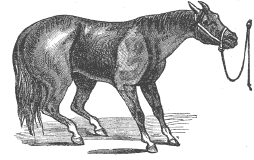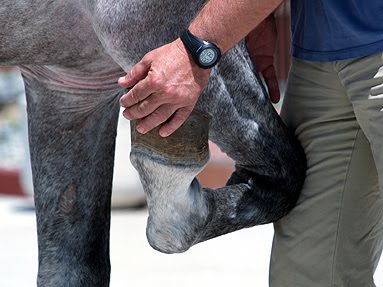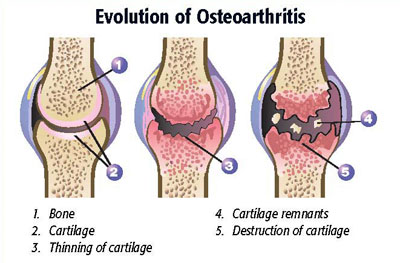 No one yet understands why horses get laminitis. Once horses do get laminitis, the success of any rehabilitation program largely depends on how bad the problem was in the first place. Happily, there are also a significant number of cases that get better on their own.
No one yet understands why horses get laminitis. Once horses do get laminitis, the success of any rehabilitation program largely depends on how bad the problem was in the first place. Happily, there are also a significant number of cases that get better on their own.
Therein lies the rub. If a horse’s laminitis is terribly severe, is there is massive destruction of the attachments of the bone inside the hoof, no matter how sincere and dedicated your rehabilitation program, failure may be inevitable. Conversely, if the initial insult is relatively minor, and the horse is going to get better anyway, just about any thing that you choose to do will appear to “work.”
Given the possibilities of almost certain failure and almost certain success, an almost endless number of techniques and approaches to rehabilitating the horse with laminitis exist. These possibilities range from the simplest, such as a bit of rest, with some trimming and shoeing of the hoof, to the more complex, such as special diets, wooden shoes, and a drawer full of medications. Indeed, one of the greatest challenges is trying to choose from all of the different treatment and rehabilitation options.
The fact is that, insofar as laminitis goes, no single approach to therapy and rehabilitation has been shown to be effective in all – or even most – cases. Nor have any studies been done to compare the usefulness of one approach to another. Thus, your decisions concerning the “proper” rehabilitation program for your horse are going to be mostly based on the experience of the person(s) taking care of him. Furthermore, since each case of laminitis can be a little different, there probably is no “ideal” rehabilitation program. So, as much as it would be great to have a single program that fits every horse, some trial and error in rehabilitating a horse with laminitis may be inevitable.
It’s also a fact that while there are many different approaches to rehabilitating the horse with laminitis, the ability of particular individuals to use any of these approaches may vary. Not every veterinarian is comfortable performing unusual surgeries and not every farrier has made every possible shoe. Indeed, more complicated and difficult cases may require some considerable teamwork and it will be up to you to keep everyone working together.
That said, some general principles for rehabilitating a horse with laminitis would seem to be applicable.
1. Try, to the best of your ability, to keep the horse out of pain. Management of the pain of laminitis is important from many standpoints, not the least of which is a humane one. It may not be possible to keep a horse that is recovering from laminitis pain free, but it is certainly something you can try to do. Pain management may include drugs, special bedding or special shoes; work with your veterinarian and farrier to come up with a program that best seems to help your horse.
2. Monitor the status of the horse’s foot. This generally means that you should “look inside” the horse’s foot on a regular basis with radiographs (X-rays). By following the status of the horse’s bone, you’ll be able to get a pretty good indication of how things are going inside the hoof.
3. Some shoeing and trimming of the horse may be necessary. The possibilities are almost endless. However, in other cases, less is more, that is, many cases of laminitis do well with no shoes and need little more than to be left alone.
4. Wait at least 30 days after your horse appears to be normal before resuming any sort of normal work. Laminitis can cause some permanent changes inside your horse’s hoof, and for a horse to completely recover, some significant growth and healing has to occur. Laminitis can leave the foot structurally weak, and it takes time for the horse’s body to repair the weakness. If you appear to have won the battle against laminitis, don’t assume that because he looks good, everything is now OK. Be patient and let things stabilize before getting your horse back to work.
Still, no matter what rehabilitation approach you choose, caring for horses with laminitis is more than just finding the best approach. There are considerations beyond the medical ones. You need to consider a few other important things.
Keep in mind that, with laminitis, you’re not just rehabbing a foot; the foot has an entire horse attached to it! You must understand that many other problems that can be associated with laminitis. If you’re going to have a successful outcome for your rehabilitation efforts, you’re must address the primary problem (if possible).
Understand that it’s simply impossible to predict how an individual horse with laminitis is going to respond to your rehabilitation efforts. There is a wide variation in the signs of disease, as well as in the extent of the underlying problem. The mechanism and development of laminitis has not been fully worked out. There are a lot of theories, and some facts, but as yet an incomplete understanding of the condition. No one has all the answers.
Recognize that the clinical signs of the disease and the amount of pain associated with laminitis do not necessarily correspond to the amount damage in the foot. Furthermore, so much damage may occur from the initial onset of the disease that healing of the foot is impossible. So, depending on what happens, and regardless of what you do and how well you do it, you may not have a successful outcome, no matter how early in the course of the disease you start treatment. Given these variations, trying to predict how things are going to go for your horse may be an exercise in futility. So, try to keep your expectations realistic.
While you’re bringing your horse back, understand that, as much as you’d like to know exactly why you have to deal with laminitis in the first place, it may not be possible to determine the exact cause of the problem. It’s not always someone’s fault. Complex problems, such as laminitis, don’t necessarily have simple solutions. Sure, in some cases you’re going to find out that your horse managed to break into the feed bin, or that he has been really sick, but in other cases, your horse will have been normal and there will have been no obvious changes in his feeding, exercise or grooming routine. If you start speculating as to what caused the problem, you may find out that all you end up doing is placing blame somewhere that it doesn’t belong.
Remember that the success of your rehabilitation program is probably going to be most directly influenced by how bad the problem was in the first place. By the time someone recognizes that your horse has laminitis (that is, your horse is in pain or is showing lameness) structural changes within the foot have already occurred. As a result, you’re already in a difficult position when it comes to trying to rehabilitate your horse because the disease already has a head start. Treatment and rehabilitation then becomes a matter of damage control, and success largely depends on how much the damage can be repaired. The longer the problem has been going on, the harder it is likely to be to fix. Furthermore, in horses in which the damage to the foot has been extensive, it may not be possible to fix things at all.
It’s a fact that no matter how good or bad things look at the onset, you won’t necessarily be able to predict how things are going to turn out. You may end up feeling like a hero, and get a sound riding horse back. However, in spite of everyone’s best efforts at rehabilitation, you could also end up with a permanently lame horse, or even one that must be put to sleep. The best that you can do is attack the condition to the best of your ability, and hope that everything turns out well.
It’s also possible that your rehabilitation efforts will result in a horse that’s not completely cured. That is, even if your initial treatments stop the progress of the disease (or it stops on its own), you still might end up with a horse that requires constant attention. This attention might include regular visits from your veterinarian and/or farrier, special medications, custom horseshoes, or special feed and bedding requirements. Otherwise stated, no matter how diligently and sincerely you rehabilitate your horse with laminitis, you could end up with a life-long problem on your hands. The best that you may end up being able to do is to try to figure out how the horse can get along with permanent damage to its feet. There’s a cost for this; understand that before you undertake extensive rehabilitation efforts that managing laminitis can be very expensive.
Even if things go well initially, it’s possible that other foot problems may crop up later. These problems include not only additional episodes of laminitis, but also such things as foot abscesses, separations of the hoof wall (“seedy toe”), abnormal hoof growth or lameness. It’s been said that once a horse has laminitis, he always has laminitis; that is, even if a horse appears to have gotten completely better, he still has some risk of developing the condition again at some point in the future.
One of the most difficult issues to deal with is what to do about a horse that is not responding to any rehabilitation efforts, and, as a result, is in chronic pain. The horse’s well-being must be kept at the forefront of your rehabilitation efforts. Most horses that have laminitis also have a significant amount of pain, lameness and/or structural change within the hoof itself. This is an inevitable part of dealing with the condition. However, it is important that the horse not be allowed to suffer unduly.
Unfortunately, there’s almost never a point at which you can say, “Now’s the time.” There always seems to be some hope for recovery, even in the most severe circumstances. Someone always seems to be able to recall a horse that made a seemingly miraculous recovery from a devastating case of laminitis. But, in cases where a horse with laminitis is not responding to treatment and rehabilitation efforts, you may need to ask yourself, “Is this horse being kept alive for its sake or for my sake?” Clearly, making a decision to end a horse’s life isn’t easy. It’s a decision that should be made by all of the parties involved in the caring for the horse. But, keeping a chronically suffering horse alive just because someone thinks that the horse is irreplaceable, or because someone has a “new” approach to rehabilitation, is not kind – it’s cruel.
Finally, if someone tells you that if he or she had started their particular approach to rehabilitation “in time,” your horse things would be much better, you’re either dealing with a charlatan, an egomaniac, or a fool. Laminitis is a humbling disease and anyone who claims universal success simply hasn’t treated enough horses.
Horses with laminitis can be difficult to take treat and rehabilitate even under the best of circumstances. Unfortunately, at this time, there is simply no single “optimum” approach to rehabilitation for each horse. Most of the things that people do to rehabilitate horses with laminitis seem to some value, at least some of the time, but no one procedure is clearly superior to another. To have success in a rehabilitation program for laminitis, you should try to learn as much as you can about this condition. If nothing else, if you’re program ultimately work, you’ll be able to feel good that you did everything that you could.






